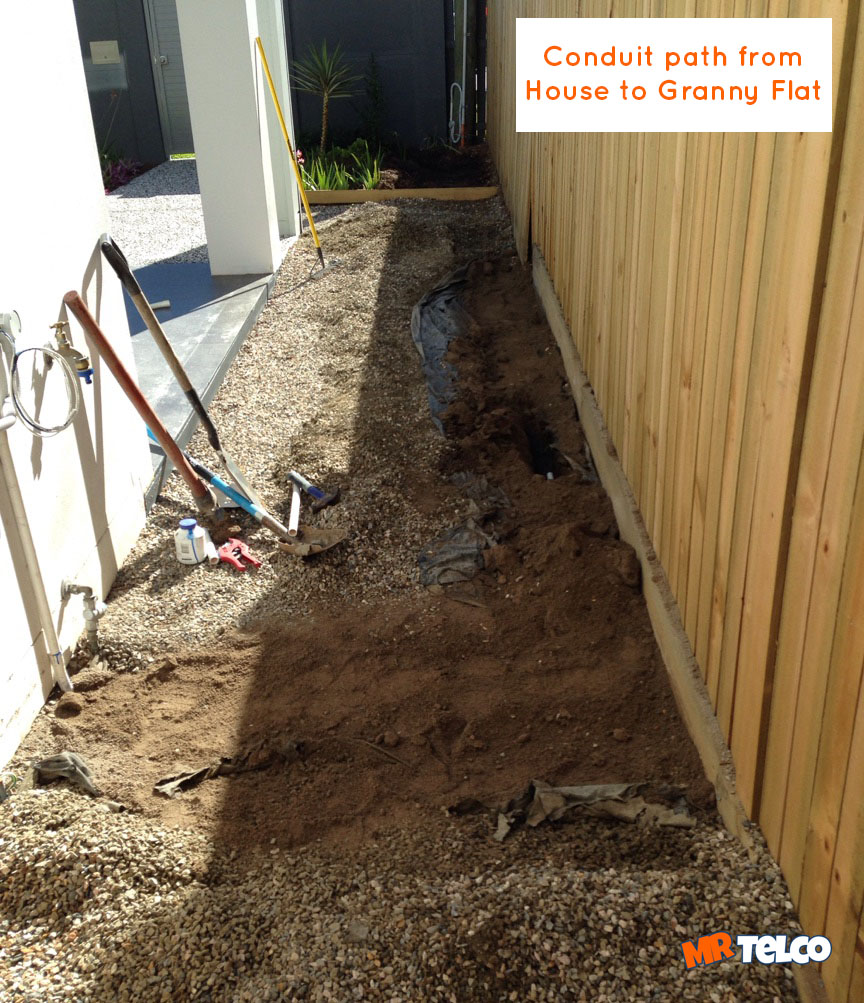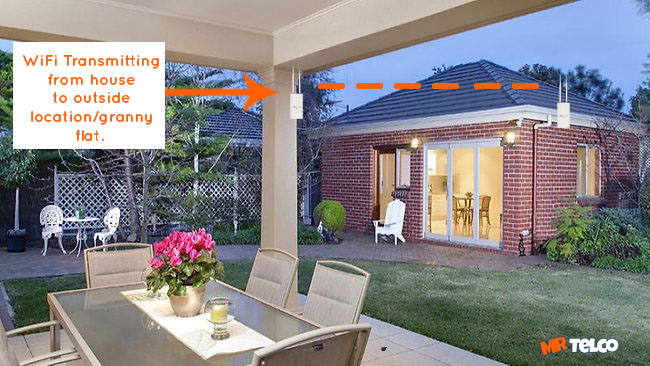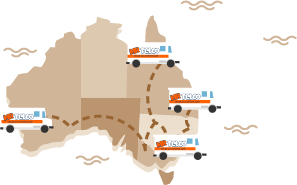Best Method: Extend Phone & Internet Connection between Buildings
Posted at 26/07/2016 05:04pm
Australian housing = super expensive. More homeowners are looking to build spaces, extension rooms or granny flats on their land to accommodate for teenagers wanting their own space who can’t yet afford to move out, or perhaps you’ve gone the full circle and those lovely in-laws are moving in, so you’re looking for locations close enough yet far enough for a healthy balanced living situation by building them a granny flat on your property.
Just as important as electricity and water, you’re extended family won’t be able to survive without a telephone or a decent speed internet connection, so it makes sense to provision for telephone and internet during the building stages, but if that’s too late you can always add-on later however might just be a little more difficult and costly, but definitely possible.
As Australian’s have some of the largest land size per house in the world, there are obstacles which you may face when trying to extend your internet connection into another building or dwelling on your property, below I’ve detailed two options for you to decide the best way to extend your phone and internet services to any outdoor location and outside your home.
#1 Dig trench between house and extended building (granny flat)
The most common way to extend your internet and telephony services are to dig a trench in between house 1 and the extended area or granny flat location.
This will require the works of digging a trench roughly 300-450mm deep from your main house’s building entry point to your secondary location, alternatively you may wish to dig a trench from the closest corner of your house to the granny flat.

Once your trench has been dug to ACMA regulatory depth height, you will then proceed with the installation of your communications conduit which needs to be sealed with the correct plastic adhesive glue to prevent water entering the pipe.
After waiting an hour for your conduit pipe adhesive to dry, your job is to pull through flooded (grease-filled) network Cat6 data cabling X 2. One cable will be used for your internet connection, and the second for your phone line.
Make sure your phone cable is run to your building entry point (Telstra lead-in location or first telephone socket in your house) and your data to the existing house’s internet router location, so it can be plugged in with a Cat6 data cable fly lead into the back of your modem/router.
Please note: ACMA regulation states a licensed telecommunications data cabler is required for the installation and termination of wall-sockets for your phone and internet services.
Depending on the terrain around your property, digging a trench may not be possible or viable, especially if you’ve got tons of concrete in between each location or 100+ year old tree roots which may pose an issue with hand digging equipment tools or using a special digger. Thus you might like to take into consideration the next option for delivery of your phone and data cabling.
#2 Wireless Access Point or PTP Microwave for extending internet connection
Wireless PTP microwave antennas sounds really techo and super expensive right? Wrong.
I believe using wifi technology is the ultimate solution for reaching from point A to point B, also being a superior and cheaper option should you wish to extend your phone and internet connection between buildings or a granny flat compared to digging. Many business use point-to-point microwave and wireless access points, so for residential application don’t stress, with an onsite wireless site survey, it should be a piece of cake.

A wireless point-to-point device or access point solution will act as a network that bridges the internet connection from a transmitter on building one to a receiver on building two.
There are some really great devices and methods which will probably require the expertise of a cabling and network installation company to setup (i.e. Mr Telco) however definitely within the confines of the word ‘doable’ and making sense for your wallet.
Questions:
To extend my network using wifi does each antenna need to see line-of-sight?
Not necessarily, although line-of-site would be great and provide a more consistent reliable speed and supply to a much further distance i.e. Up to 15km, however it’s definitely not required.
We can use a simple solution that is similar to how the mobile phone network operates off the towers using a sector (made for the internet) which is placed on your roof using a mounting kit supplying internet to the remote location.
What is the first step in extending my network to another building or location?
The first step is to engage a company to visit your house and perform what’s called a site-survey. It’s where the wireless technician will bring out some gadgets and analyze your area and put forward the best solution to you.
Guidelines for Sharing Internet Connections with Tenants
Are the people sharing your internet connection family members? Then you’re both going to save money by not having to front two monthly access fee’s through your Internet Service Provider. It just makes sense to share the same connection and for both parties’ pockets. So a WIN! WIN! situation for everyone involved.
However, if you are considering renting out your granny flat to an unknown tenant i.e. not close relations, you can still provide internet access to the tenant and actually a great value-add point when advertising your granny flat for rent, but just make sure you draw into your contract the following:
1. Internet access conditions such as usage or guarantee of service, because there are odd occasions where during heavy weather when your internet connection quality may degrade or drop completely.
2. Make sure they can’t legally hold you liable for intruding or sniffing into their connection (breaching privacy). You just never know the measures and tactics people will go to during a fallout or to get back at someone.
3. Over usage throttling -Another reason why you’ll want to include a throttling or QOS clause into your agreement, is because the person(s) renting from you, may have an appetite for large data download and bandwidth, which could leave you with your internet connection dropping out, internet streaming shows buffering.
There won’t be a worse feeling sitting down at 8pm at night with a bowl of popcorn about to flick on your favourite TV series on Netflix and your screen keeps pausing and buffering while knowing that your tenant is hogging all your bandwidth on some game until 3am in the morning.
Conclusion:
Hoping this article about extending your phone and internet connection has been useful and you can walk away with a more knowledge than you came with. Should you have any questions about understanding wifi, phone or internet, reach out to our team at Mr Telco for some advice.


